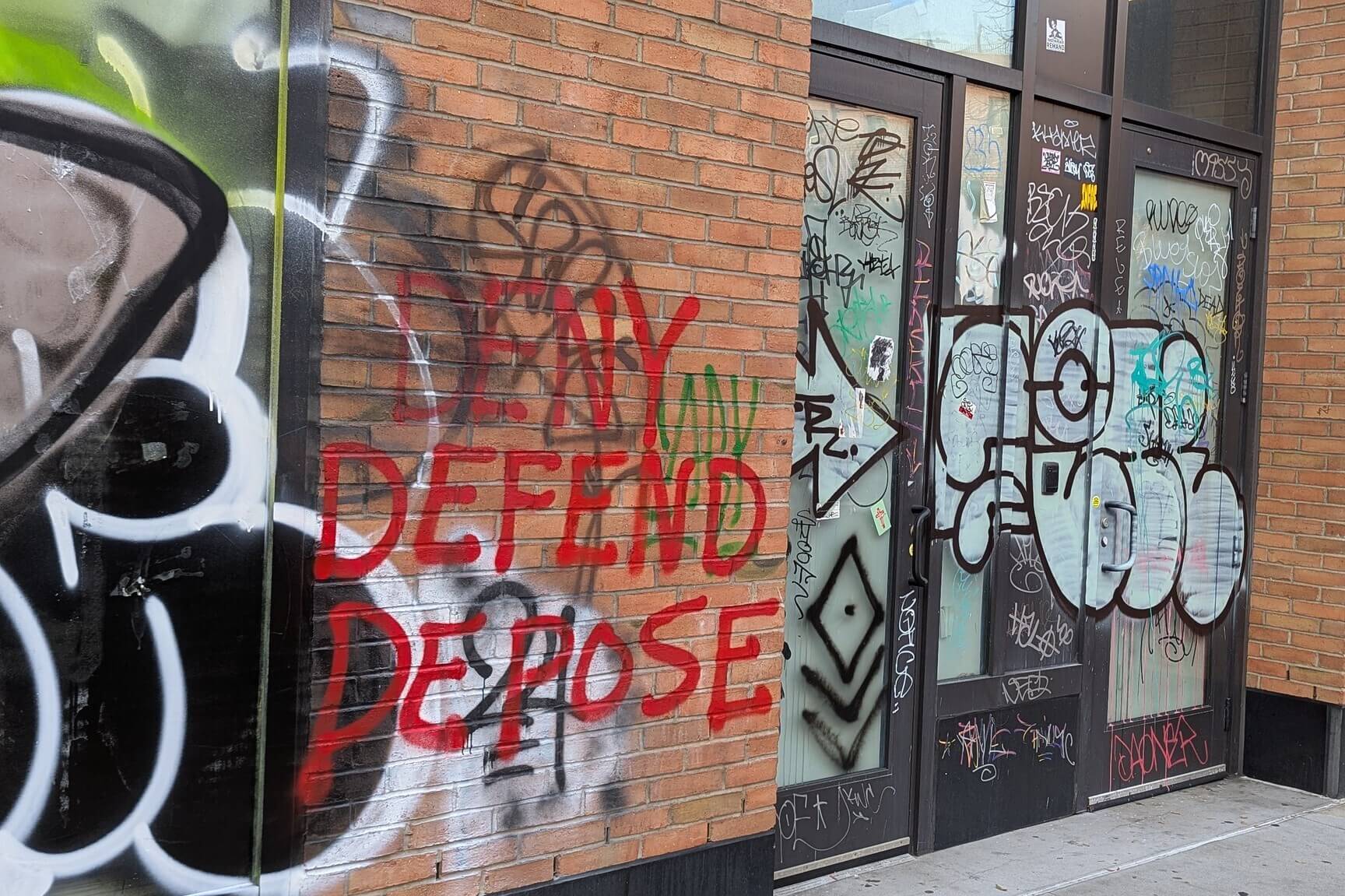Tier III Terrorist Designations: The Trump Administration and Courts Move in Opposite Directions
President Trump has vowed “to keep radical Islamic terrorists the hell out of our country.” While new mutations of his travel ban grind slowly through the courts, the president may take solace in one far-reaching exclusionary tool: denying visas and deportation relief based upon membership in an undesignated, or Tier III, “terror
Published by The Lawfare Institute
in Cooperation With

President Trump has vowed “to keep radical Islamic terrorists the hell out of our country.” While new mutations of his travel ban grind slowly through the courts, the president may take solace in one far-reaching exclusionary tool: denying visas and deportation relief based upon membership in an undesignated, or Tier III, “terrorist organization.” The Tier III immigration bar, created by the 2001 USA PATRIOT Act, is a double whammy: It adopts a stunningly broad definition of terrorism and it lets low-level officials decide on an ad hoc basis whether a foreign group is a “terrorist organization,” even if the group doesn’t appear on any government list.
In October, the Trump administration rescinded Obama-era guidance designed to temper visa denials due to Tier III “terrorist organization” status. The Obama administration implemented automatic “holds,” or delays, on such visa denials while officials higher up the executive branch chain considered whether to grant a discretionary exemption. The new policy does away with these holds, making the denial of application immediate. This about-face follows reports this year of an aggressive use of Tier III exclusionary power that ensnared a respected Syrian dissident.
But the administration’s boost to the Tier III system runs counter to the trend in the courts expressing skepticism—if not outright alarm—at the sweeping and unpredictable application of immigration bars via Tier III terrorism determinations. This skepticism was recently on display in a September decision by the Third Circuit that sought to reign in such Tier III assessments by requiring top-down leadership authorization of terrorist acts; it can be traced back to a decade-old opinion by Judge Maryanne Trump Barry—who happens to be the president’s older sister.
This post will briefly explain the legal framework of Tier III terrorist determinations, then discuss the Third Circuit’s recent decision and situate it within a trend of judicial discomfort with the statute’s expansive reach.
What Is a Tier III Terrorist Organization?
The U.S. government formally designates foreign terrorist organizations, maintaining two separate lists: a registry of Foreign Terrorist Organizations (Tier I) and the Terrorist Exclusion List (Tier II). But some dangerous groups are bound to fly under the radar or may escape formal designation for political or bureaucratic reasons, while still posing a threat.
That’s why the post-9/11 USA PATRIOT Act amended the Immigration and Nationality Act (INA) to establish a third class (Tier III) of “terrorist organization”. Such groups don’t appear on any official list but are still deemed terrorist organizations for immigration purposes if they engage in certain kinds of violence. Because there is no centralized list, each consular official and immigration judge must decide for themselves whether a particular applicant’s organization makes the cut as a Tier III terrorist group.
The statute defines Tier III terrorist organizations as “a group of two or more individuals, whether organized or not, which engages in, or has a subgroup which engages in” terrorist activity (8 U.S.C. § 1182(a)(3)(B)(vi)(iii)). The act further defines “terrorist activity” extremely broadly, including the unlawful use of any “weapon or dangerous device (other than for mere personal monetary gain), with intent to endanger, directly or indirectly, the safety of one or more individuals or to cause substantial damage to property” (§ 1182(a)(3)(B)(iii)(V)). Finally, the act defines “engage[s] in terrorist activity” as including even preparation, planning, or soliciting funds for any “terrorist activity” (§ 1182(a)(3)(B)(iv)). The upshot is a rather stupefying definition of terrorist organization: Two disorganized teenagers who planned to smash up a storefront with a baseball bat for kicks would likely qualify as a Tier III terrorist group. If these teens were a “subgroup” of some larger group, the whole organization would then be considered a Tier III terrorist organization.
What Are the Consequences of Tier III Designations?
Section 212 of the INA establishes a series of Terrorism-Related Inadmissibility Grounds (TRIG), including membership in a Tier III terror group. This means that a member of such a group cannot enter the country “unless the alien can demonstrate by clear and convincing evidence that the alien did not know, and should not reasonably have known, that the organization was a terrorist organization” (§ 1182(a)(3)(B)(i)(VI)).
On top of this, if a member of a Tier III group has somehow entered the country already, he or she is deportable (§ 1227(a)(4)(B)) and is further ineligible for a cancellation of removal, which would otherwise be available for someone who has been in the country several years and exhibited good behavior (§ 1229b(c)(4)). Finally, while deportation may generally be “withheld” (that is, stopped) on humanitarian grounds—as when there is reason to believe that the individual would face persecution in their country of origin—a member of a group with Tier III status is ineligible for such humanitarian relief (see §§ 1158(b)(2)(A)(v) and 1231(b)(3)(B)(iv)).
How Are Tier III Designations Made?
Tier III decisions are made on a case-by-case, ad hoc basis by individual consular officials and immigration judges. A consular official may deny a visa on these grounds with little or no process. But for aliens already in the country and facing deportation, the case winds up in an immigration court—part of the Executive Office of Immigration Review (EOIR)—whose decisions can be appealed to the Board of Immigration Appeals, also within the executive branch.
Federal regulations are vague on the process of establishing Tier III status, but they are not favorable to the individual facing deportation. Once “the evidence indicates”—a standard well-short of proof—that a group is a Tier III terrorist organization and the alien belonged to it, then the “burden” shifts to the alien to “prov[e] by a preponderance of the evidence” that the group is not a Tier III terrorist organization or that the alien had no reason to know that. (Denise Bell offers a more in-depth look at how Tier III determinations play out in immigration court.)
The Third Circuit’s Limitations on Tier III Designations
In its September decision in Uddin v. Attorney General, a Third Circuit panel criticized the “highly inconsistent” determinations of the Board of Immigration Appeals regarding Tier III terrorist organizations and set forth a rule to “help provide the Board a principled method of adjudicating Tier III cases.” The court’s new rule holds that a showing of terrorist activity by a group’s members is not enough to confer Tier III status—there must also be a finding that the terrorist activity was “actually authorized ... by a group’s leaders.”
The Uddin case illustrates the confusion that has developed in determining whether a foreign group or political party qualifies as a Tier III terrorist organization. Joshim Uddin, who immigrated illegally to Brooklyn, was a member of the Bangladesh National Party (BNP), the main opposition to the ruling Awami League (AL) party in Bangladesh. Both parties have frequently resorted to violence, the Third Circuit noted, such as deploying a “death squad” known as the Rapid Action Battalion. Moreover, both parties have organized violent “general strikes and traffic blockades” during election cycles, during which activists firebombed buses and polling centers.
The immigration judge and Board of Immigration Appeals found that these well-known facts were enough to establish that the BNP was a Tier III terrorist organization while Uddin was a member. However, despite the government’s contention to the Third Circuit panel that it knew of no holdings to the contrary, the court’s initial research turned up several decisions that the BNP was not a terrorist organization (several of them are even conveniently posted on Berkeley Law’s Human Rights Center’s website).
The panel then ordered the government to provide all decisions by the board regarding the BNP’s Tier III status over the last two years—which amounted to fifty-four decisions that reached “radically different results.” The panel noted that “something is amiss where, time and time again, the Board finds the BNP is a terrorist organization one day, and reaches the exact opposite conclusion the next.”
Partly in order to lift this fog, the Third Circuit panel decided that a finding of Tier III status must include a showing that the group’s leaders “actually authorized” the terrorist activity committed by the members. However, the panel acknowledged that this rule does not require the leaders to “explicitly sign off on each individual terrorist act at issue”—rather, the leadership’s “words, acts, or silences [can] amount to authorization” depending on the context, as determined on a case-by-case basis. In any event, such a rule would provide further guidance for immigration judges and the board in deciding whether to assign a foreign group Tier III status.
How Far Can Tier III Go?
Aside from imposing more consistency on the board’s approach to Tier III determinations, the Third Circuit panel’s decision appealed to “common sense notions as to what a terrorist organization is.” Quoting Judge Richard Posner’s 2008 opinion in Hussain v. Mukasey, the panel noted that “[a]n organization is not a terrorist organization just because one of its members commits an act of armed violence without direct or indirect authorization.” The panel offered an intuitive analogy:
If a single member of the Democratic or Republican Party committed a terrorist act, we would not impute terrorist status to the entire group, absent some showing that party leadership authorized the act. So too here, it cannot be that the acts of any single member of the BNP can transform the organization into a terrorist group.
This analogy suggests an acute anxiety that the capacious Tier III statute may swallow legitimate political activity. In a telling footnote, the panel observed that such violence “seems to color the political landscape in Bangladesh,” so the two major parties, the BNP and AL, would both be considered terrorist organizations. Following this logic, “it appears that a large swath of Bengali aliens who are members of these parties would be ineligible for most forms of immigration relief,” the panel noted. “This gives us pause.”
Such hesitation fits with a trend of judicial wariness of the statute’s expansive definition of terrorist activity. Indeed, Posner described it as a “statutory deformation of the ordinary meaning of ‘terrorist’” since it would encompass various kinds of non-political violence. Even the Board of Immigration Appeals—part of the executive branch—in one 2006 decision, called the statute “breathtaking in its scope,” and pointed to seemingly bizarre consequences: “an individual who assisted the Northern Alliance in Afghanistan against the Taliban in the 1990s would be considered to have provided ‘material assistance’ to a terrorist organization under this statute and thus would be barred from asylum.” (A similar political oddity occurred in 2014, when two Iraqi Kurdish groups fighting ISIS and allied with the U.S. were classified as Tier III terrorist organizations, prompting Congress to expressly exclude them from this category.) These consequences are magnified by the fact that the statute makes no exception for material support provided under duress.
The most trenchant judicial protest of the wide reach of the INA’s “terrorist activity” exclusion is found in a 2006 concurring opinion by Judge Maryanne Trump Barry, President Trump’s older sister. “I refuse to believe,” Barry began her extraordinary concurrence, “that ‘Give me your tired, your poor, your huddled masses yearning to breathe free ...’ is now an empty entreaty. But if it is, shame on us.” (This opinion attracted renewed attention after President Trump’s senior political adviser seemed to disavow the Statue of Liberty poem from the White House podium.) Barry complained that Congress’s definition of terrorist activity “bear[s] no relation to any common-sense understanding of what ‘terrorist activity’ really is or should be” and “sweeps in not only the big guy, but also the little guy who poses no risk to anyone.”
In this light, the Third Circuit’s limitation on Tier III determinations appears to be another expression of judicial unease with the INA’s sweeping definitions of terrorist activity. Some judges appear wary of a statute that would bar the harmless little guy, American allies abroad, and virtually the entire Bengali population. As the Third Circuit put it, “[t]his gives us pause.”
But the Trump administration, with its recent move rescinding Obama-era brakes on parts of the Tier III exclusion process, shows no sign of slowing down.


.jpg?sfvrsn=d45482bc_5)


